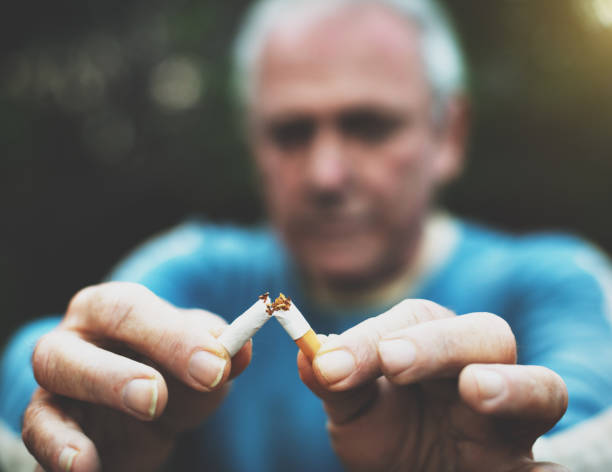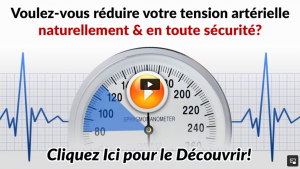High Blood Pressure(hypertension) is called the “silent killer” for good reason. It often has no symptoms but is a major risk of heart disease and stroke. And these diseases are among the leading causes of death in the United States.
Almost half of U.S. adults have high blood pressure.
Your blood pressure is measured in millimeters of mercury, which is abbreviated as mm Hg. There are two numbers involved in the measurement:
- Systolic blood pressure. The top number represents the force of the pressure when your heart pushes blood into the arteries throughout the rest of your body.
- Diastolic blood pressure. The bottom number represents the pressure in your blood vessels between beats, when your heart is filling and relaxing.
Here are 17 effective ways to lower your blood pressure levels.
A meta-analysis of 65 studies suggests that aerobic and resistance exercise can significantly lower blood pressure, especially for men.
In a 2013 study, sedentary older adults who participated in aerobic exercise training lowered their blood pressure by an average of 3.9 percent systolic and 4.5 percent diastolic (5). These results are as good as some blood pressure medications.
As you regularly increase your heart and breathing rates, over time your heart gets stronger and pumps with less effort. This puts less pressure on your arteries and lowers your blood pressure.
How much activity should you strive for?
A 2019 report by the American College of Cardiology and the American Heart Association advises moderate- to vigorous-intensity physical activity for 40-minute sessions, three to four times per week.
If finding 40 minutes at a time is a challenge, there may still be benefits when the time is divided into three or four 10- to 15-minute segments throughout the day.
Just do it regularly and work up to at least half an hour per day of moderate activity.
One example of moderate activity that can have big results is tai chi. A 2017 review on the effects of tai chi and high blood pressure shows an overall average of a 15.6 mm Hg drop in systolic blood pressure and a 10.7 mm Hg drop in diastolic blood pressure compared with no exercise at all.
2. Lose weight if you’re overweight
If you’re overweight, losing 5 to 10 pounds can reduce your blood pressure. Plus, you’ll lower your risk of other potential medical problems. A review of several studies reports that weight loss diet reduced blood pressure by an average of 3.2 mm Hg diastolic and 4.5 mm Hg systolic.3. Cut back on sugar and refined carbohydrates
Many studies show that restricting sugar refined carbohydrates can help you lose weight and lower your blood pressure. Sugar, especially fructose, may increase your blood pressure more than salt, according to one 2014 review. In trials lasting at least 8 weeks, sugar increased blood pressure by 5.6 mm Hg diastolic and 6.9 mm Hg systolic. A 2020 study that compared various popular diets found that for people who with more weight or obesity, low carb and low fat diets lowered their diastolic blood pressure by an average of about 5 mm Hg and their systolic blood pressure 3 mm Hg after 6 months. Another benefit of a low carb, low sugar diet is that you feel fuller longer, because you’re consuming more protein and fat.Does avocado lower blood pressure?
Avocados are high in potassium and low in salt. Because of this they are recognized for their ability to lower blood pressure and protect against heart attack and stroke.
4. Eat more potassium and less sodium
Increasing your potassium intake and cutting back on salt can also lower your blood pressure. Potassium is a double winner: It lessens the effects of salt in your system and eases tension in your blood vessels. However, diets rich in potassium may be harmful to people with kidney diseases, so talk with your doctor before increasing your potassium intake. It’s easy to eat more potassium. So many foods are naturally high in potassium. Here are a few:- low fat dairy foods, such as milk and yogurt
- fish
- fruits, such as bananas, apricots, oranges and avocados.
- vegetables, such as sweet potatoes, potatoes, tomatoes, greens and spinach.
5. Eat less processed food
Most of the extra salt in your diet comes from processed foods and foods from restaurants, not your salt shaker at home. Foods labeled “low fat” are usually high in salt and sugar to compensate for the loss of fat. Fat is what gives food taste and makes you feel full. Cutting down on — or even better, cutting out — processed food will help you eat less salt, less sugar, and fewer refined carbohydrates. All of this can result in lower blood pressure.6. Stop smoking
It can be difficult to do, but it’s worth it: Stopping smoking is good for your all-around health. Smoking causes an immediate but temporary increase in your blood pressure and an increase in your heart rate.
In the long term, the chemicals in tobacco can increase your blood pressure by damaging your blood vessel walls, causing inflammation, and narrowing your arteries. The hardened arteries cause higher blood pressure.
The chemicals in tobacco can affect your blood vessels even if you’re around secondhand smoke.
A study showed that nonsmokers who were able to go to smoke-free restaurants, bars, and workplaces had lower blood pressure than nonsmokers in areas that had no smoke-free policies affecting public places.
7. Reduce excess stress
We live in stressful times. Workplace and family demands, national and international politics — they all contribute to stress. Finding ways to reduce your own stress is important for your health and your blood pressure. There are lots of ways to successfully relieve stress, so find what works for you. Practice deep breathing, take a walk, read a book, or watch a comedy. Listening to music daily has also been shown to reduce systolic blood pressure. A 20-year study showed that regular sauna use reduced death from heart-related events. And one small 2015 study has shown that acupuncture can lower both systolic and diastolic blood pressure.8. Try meditation or yoga
Mindfulness and meditation, including transcendental meditation, have long been used — and studied — as methods to reduce stress. Yoga, which commonly involves breathing control, posture, and meditation techniques, can also be effective in reducing stress and blood pressure. A 2013 review on yoga and blood pressure found an average blood pressure decrease of 3.62 mm Hg diastolic and 4.17 mm Hg systolic when compared with those who didn’t exercise. Studies of yoga practices that included breath control, postures, and meditation were nearly twice as effective as yoga practices that didn’t include all three of these elements (25).9. Eat some dark chocolate
Yes, chocolate lovers: Dark chocolate has been shown to lower blood pressure. But the dark chocolate should be 60 to 70 percent cacao. A review of studies on dark chocolate has found that eating one to two squares of dark chocolate per day may help lower the risk of heart disease by lowering blood pressure and inflammation. The benefits are thought to come from the flavonoids present in chocolate with more cocoa solids. The flavonoids help dilate, or widen, your blood vessels.10. Try these medicinal herbs
Herbal medicines have long been used in many cultures to treat a variety of ailments. Some herbs have even been shown to possibly lower blood pressure. However, more research is needed to identify the doses and components in the herbs that are most useful. Always check with your doctor or pharmacist before taking herbal supplements. They may interfere with your prescription medications. Here’s a partial list of plants and herbs that are used by cultures throughout the world to lower blood pressure:- Chinese hawthorn (Crataegus pinnatifida)
- ginger root
- giant dodder (Cuscuta reflexa)
- Indian plantago (blond psyllium)
- maritime pine bark (Pinus pinaster)
- river lily (Crinum glaucum)
- roselle (Hibiscus sabdariffa)
- sesame oil (Sesamum indicum)
- tomato extract (Lycopersicon esculentum)
- tea (Camellia sinensis), especially green and oolong tea
- umbrella tree bark (Musanga cecropioides)
11. Make sure to get good, restful sleep
Your blood pressure typically dips down when you’re sleeping. If you don’t sleep well, it can affect your blood pressure. People who experience sleep deprivation, especially those who are middle-aged, have an increased risk of high blood pressure. For some people, getting a good night’s sleep isn’t easy. These are some of the many ways to help you get restful sleep:- Try setting a regular sleep schedule.
- Spend time relaxing before bedtime.
- Exercise during the day.
- Avoid daytime naps.
- Make your bedroom comfortable.
12. Eat garlic or take garlic extract supplements
Fresh garlic or garlic extract are both widely used to lower blood pressure. A meta-analysis found that for people with high blood pressure, garlic supplements reduced their systolic blood pressure by up to about 5 mm Hg and reduced their diastolic blood pressure as much as 2.5 mm Hg. According to a 2009 clinical study, a time-release garlic extract preparation may have a greater effect on blood pressure than regular garlic powder tablets.13. Eat healthy high protein foods
A long-term study concluded in 2014 found that people who ate more protein had a lower risk of high blood pressure. For those who ate an average of 100 grams of protein per day, there was a 40 percent lower risk of having high blood pressure than those on a low protein diet. Those who also added regular fiber into their diet saw up to a 60 percent reduction of risk. However, a high protein diet may not be for everyone. Those with kidney disease may need to use caution. It’s best to talk with your doctor. It’s fairly easy to consume 100 grams of protein daily on most types of diets. High protein foods include:- fish, such as salmon or canned tuna in water
- eggs
- poultry, such as chicken breast
- beef
- beans and legumes, such as kidney beans and lentils
- nuts or nut butter, such as peanut butter
- chickpeas
- cheese, such as cheddar







